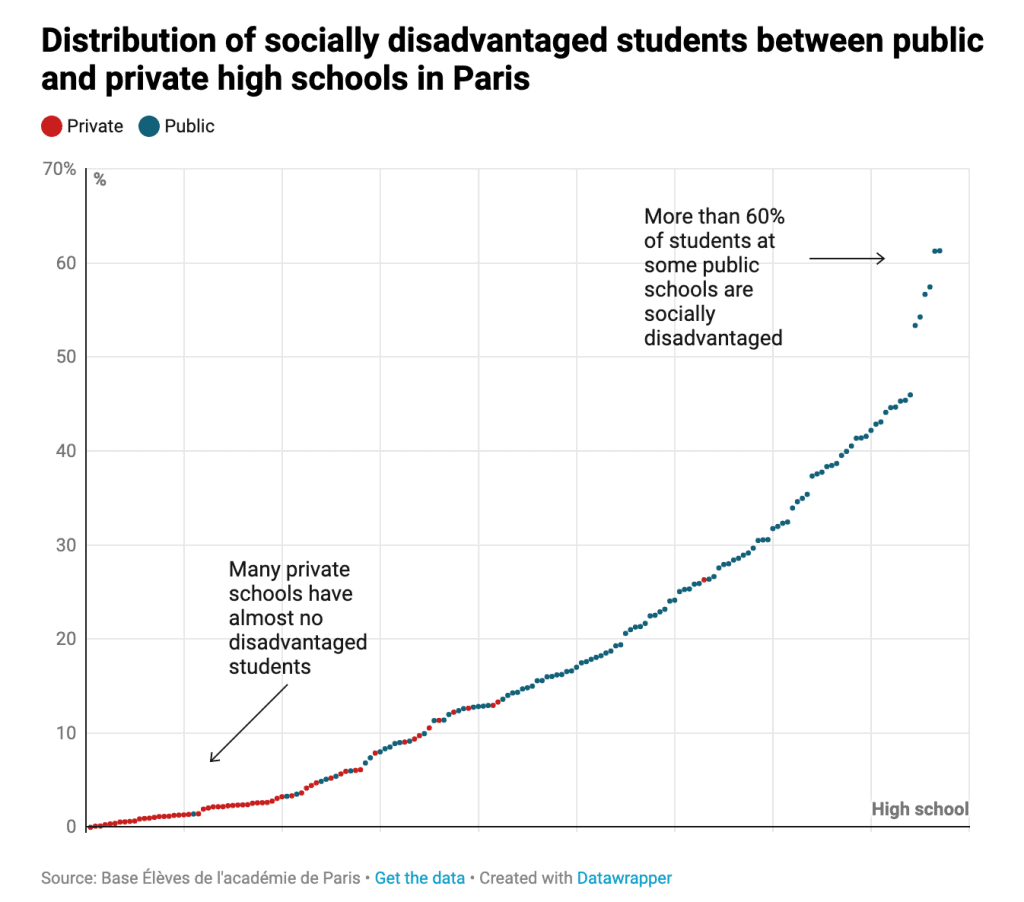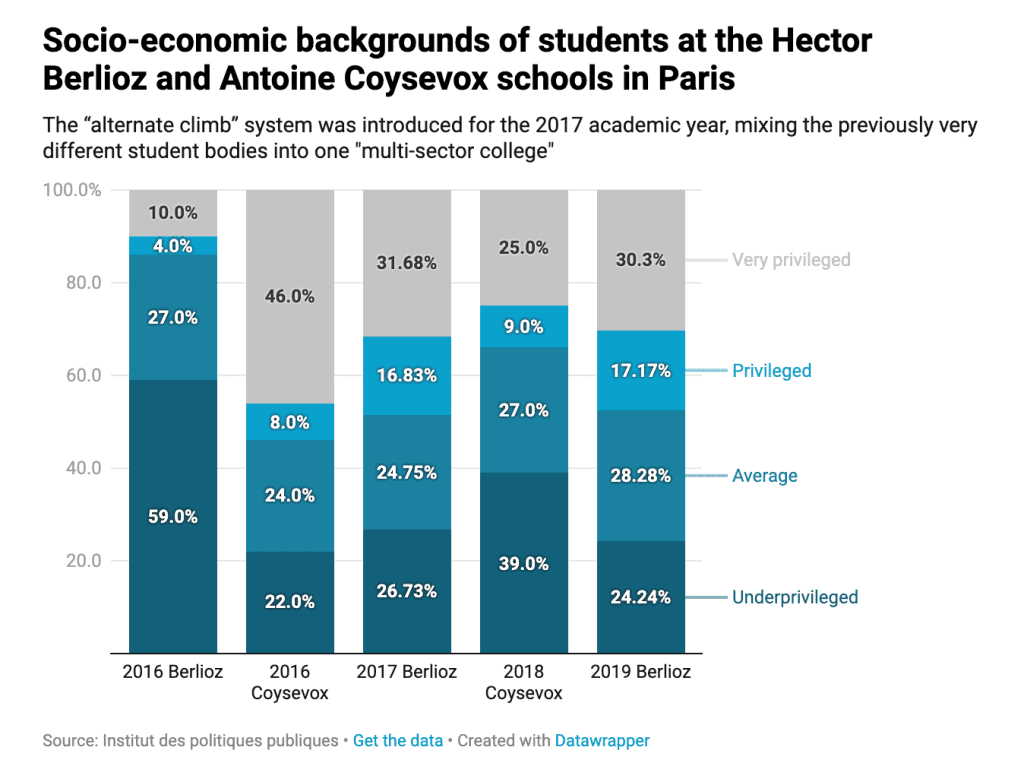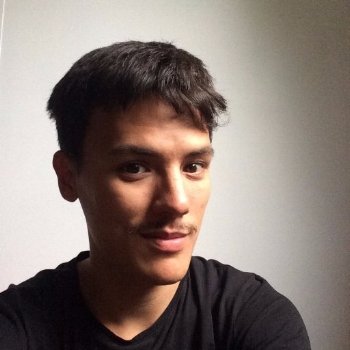In 2014, Paris earned the wretched nickname of France’s “capital of schooling segregation” due to huge social divisions that had emerged between the 85,000 students at its 175 public and private high schools.
In the city’s most privileged high schools less than one percent of students were classified as disadvantaged — defined as those whose parents are working class, unemployed or inactive — despite a citywide average of 16 percent. At the other end of the scale, nearly two-thirds of pupils at some schools were disadvantaged.
“On one street you could have entire classes of Black children standing outside a school, while entire groups of white teens were in schools located a few blocks away,” says Ghislaine Morvan Dubois, president of the Federation of Parents’ Councils of Students (FCPE) in Paris. “It was and still is a deeply troubling social divide.”
Further evidence of that divide was the abnormally high proportion of public high schools in Paris classified as priority education (REP) — 30 of the 114 — meaning they face “significant social difficulties.” But perhaps the most damning statistic of all was that 10 percent of high schools educated 63 percent of the city’s disadvantaged students.
In an article for newspaper Le Monde in 2016, influential French economist Thomas Piketty, known for his analyses of wealth and income inequality, declared that social segregation in Parisian schools had reached “unacceptable heights.”

Piketty identified two significant factors behind this “extreme segregation.” First, the underlying residential segregation in Paris, since, in the current system, a student’s address automatically determines their assigned school. Second, the prominence of private schools in Paris, which, unusually, receive government funding and cater to 34 percent of students — but are not free and can choose, or reject, students as they please.
In response, Paris City Hall and the Academy of Paris decided to experiment with a new method for allocating pupils to high schools called “multi-school sectors,” in the hope of improving diversity and social cohesion without prompting more privileged families to flee to private education, worsening the problem.
Weighed down by negative news?
Our smart, bright, weekly newsletter is the uplift you’ve been looking for.Three of these sectors — containing two schools each — were created in the northern 18th and 19th districts of Paris in 2017, with nearly a thousand students entering sixth grade assigned to them each year.
Within them, two radical methods for assigning pupils were implemented after consultation with parents’ representatives. The “alternate climb” adopted by the Berlioz-Coysevox sector saw entire grades of students switch from one school to another each year — if they studied the first year at Berlioz College, the second would be at Coysevox College. The “regulated choice” method chosen by the Bergson-Pailleron and Curie-Philipe sectors allocated the students using an algorithm, while considering input from parents.
“We chose schools that are geographically close but ones that have contrasting social compositions,” says Bérénice Delpal, director of school affairs at Paris City Hall. “We know the Paris school system is the most segregated in France. It’s a very serious challenge. And with this program we wanted to bring more balance and equilibrium.”
After three years of experimentation — for the academic years of 2017, 2018 and 2019 — researchers at the Institute of Public Policies (IPP) have hailed the results as “encouraging” in a recent report and have called for a wider rollout.
Two of the three sectors have vastly improved their social diversity and led to a clear reduction in flight to private schools. Before the scheme began, the two schools in the Berlioz-Coysevox sector, for example, had 59 percent and 22 percent disadvantaged students respectively — but that leveled out to an average of 24 percent in both by 2019. At the same time, flight to private schools fell from 24 percent in 2016 to 16 percent in 2019. In the third sector — Curie-Philipe — after initially disappointing results, gaps between the two schools also began to narrow and there was a 20 percent decrease in private school flight.
“These sectors clearly have more diverse student bodies,” says Julien Grenet, who led the research. “It’s a very positive sign. It’s evidence that this approach works.”

But for Grenet the “alternate climb” method showed better results — perhaps, he says, because of the fact pupils stayed together throughout, unlike the “regulated choice” method, which would change each year. “The social mixing was sufficiently permanent to have a lasting effect,” he says.
However, Grenet says while evidence shows the system works in urban areas that are dense and diverse — like parts of Paris, and other French cities such as Lyon, Lille, Bordeaux and Marseille — in others the model is less likely to be effective. “If there is not a diverse social fabric, the mixing won’t be effective,” he explains, pointing to the modest achievements in the Curie-Philipe sector.
Delpal of Paris City Hall adds that although multi-school sectors can bring about rapid change, more deep-seated societal shifts must be made. “Multi-school sectors are more rapidly effective, but can only work alongside other efforts such as housing and welfare policy,” she says. “The pandemic has only deepened structural inequality.”
But independent experts praise multi-school sectors as an effective medium that both improves social mobility and student choice, by incrementally widening the catchment areas for students in Paris.
“My research has found that if there isn’t choice, there is segregation, and if there is too much choice, there is segregation, too,” says Pauline Givord, a researcher specializing in school diversity at France’s National Institute of Statistics and Economic Studies. “This system allows for partial regulation without locking students in their neighborhood.”









